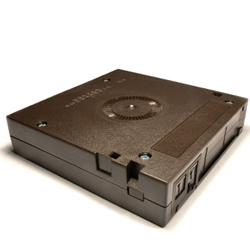Backups: Tape vs. Replication
 I’ve been asked this question enough since this site started, so I’ve finally decided to take the time and write the article. What are my thoughts on the relatively new debate on Tape Backus versus replicating the data off-site. You’ll find many people taking up sides in this debate, but in my opinion no one has a knockout win quite yet, and that’s why there isn’t a clear cut winner yet. But I’ll take the time to give you both sides and let you decide what strategies work best for you. Plus I’ll make some recommendations depending on your type of business.
I’ve been asked this question enough since this site started, so I’ve finally decided to take the time and write the article. What are my thoughts on the relatively new debate on Tape Backus versus replicating the data off-site. You’ll find many people taking up sides in this debate, but in my opinion no one has a knockout win quite yet, and that’s why there isn’t a clear cut winner yet. But I’ll take the time to give you both sides and let you decide what strategies work best for you. Plus I’ll make some recommendations depending on your type of business.
Tapes: The basic complaint out there is that tapes aren’t a prefect media, and sometimes there is an error and the data is unrecoverable. Also another downside is that tape can be lost, and depending on your backup plan that could cost you some valuable data. Now the good, backup tapes are generally the cheapest of the two solutions, generally a lower start-up cost and a lower continued cost (depending on the backup structure). Once they are put on tape the data doesn’t automatically update, so if I user deletes a file after the backup, then the tape still has the information stored on it.
Replication: Replication is becoming easier and easier now a days and looks to be the method of the future. You don’t need tapes hanging around and they replication doesn’t generally go bad for no reason. Also the recovery of files is faster, because you just need to go to the server with the replicated file and recover it (depending on setup) and not have to load tapes in and pull the data off of them. Some SAN products even have the built in replication from SAN LUN to SAN LUN at another location. Also depending on your replication site, you might be able to get your network up and running with the smallest amount of downtime (depending on your setup). Though the problem with it, is if a user deletes a file during the next replication cycle the file is gone. I’ve ran into to many instances where long after the file was deleted, it was discovered it was deleted.
SMALL BUSINESS: If you only have one site and not a lot of data, then a tape backup is probably your best bet. You probably don’t have a server at another location to replicate data to, so a tape is quick and easy. Though a big recommend is that you store you tapes off site, either with a company or at a trusted workers house. Though this may raise some security concerns if you decide to terminate that employee.
MEDIUM BUSINESS: If you have another site in which you can store your data, then replication is recommended. Keep a server of SAN at a second location as far away from the primary location as possible. If money allows, design a small DR network at the second location, so that in the worse case scenario, you can switch everything over to the backup network, it might not be as fast (depending on money spent on the DR Network). Depending on your data load, I recommend that you also do a tape backup, because you can never be to careful.
LARGE BUSINESS: Due to the large nature of your business, I’ve seen companies use both methods. The bulk of their data gets replicated to several sites, and the do tape backups of system states of servers. Replication as a large business is easy, you may have the infrastructure in place already multiple locations with their own servers in which you can place data on. Most will even have a plan in place that should a server fail there are redundancies already built in.
As you can see, as of this time, there is no perfect solution, though many out there would argue that there is. It’s always crucial to sit down and figure out your backup plan and style it to best fit your company. Always plan for the worse, like a Godzilla like monster attacks your city and crushes your building, then what? It seems silly, but a fire, terrorist attack, explosion or sabotage are all ways that data gets destroyed and how you go about recovering it, is important.
